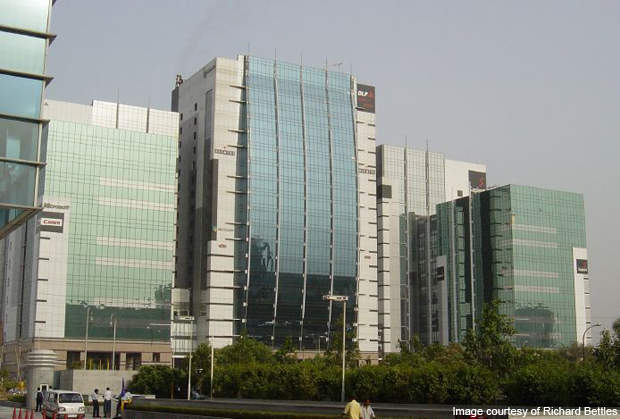The Gurgaon Metro Rail Project is a planned 6.1km-long rapid rail route that will connect Sikanderpur on Delhi Metro Line 2 (DMRC) with the DLF Cyber City region in Gurgaon near Haryana. The line is expected to open in the first quarter of 2013.
The alignment will have six stations at DLF Phase 2, Belvedere Tower, DLF Phase 3, Gateway Tower and Mall of India. The project will serve as a feeder to the Delhi Metro Central Secretariat-Gurgaon rail line.
The project was approved in 2008 and is currently undergoing civil works. Construction is scheduled to be completed by the end of 2012. The estimated cost of the project is Rs9bn ($195.3m).
Gurgaon has 500,000 commuters who travel between Delhi and the Cyber City in Gurgaon everyday. Upon completion, the line will provide transportation to 30,000 passengers an hour.
The project is the nation’s first privately owned rail line. It is also the second metro project to be built under public-private partnership (PPP) after the Hyderabad Metro.
Background
The metro line was originally proposed and tendered by the Haryana Urban Development Authority (HUDA) in 2007. It was then a 3.2km long point-to-point rail line between Sikanderpur and National Highway (NH) 8. DLF later proposed for an extension of the route to the Cyber City.
In 2008, HUDA and the consortium (DLF and IL&FS) signed an agreement to share project revenue. It was agreed that the consortium would pay the authority connectivity charges of up to Rs7.65bn ($166m) over a 35-year period in addition to 5%-10% of the advertising and property development revenue.
A new tender was issued in the second quarter of the same year.
Contracts
A consortium of DLF Metro (26%) and IL&FS (74%), named IL&FS Transportation Networks (ITNL), won the design, build and operate contract in July 2009.
The consortium will get a concession period of 99 years from the date of completion. A special purpose company, Rapid Metro Rail Gurgaon Ltd (RMGL), has been formed to construct and operate the Metro system.
RMGL is a joint venture of ITNL ENSO Rail Systems (IERS), ITNL and DLF Metro.
Siemens Mobility is the main contractor and will cover the majority of the works from track building, to electrification, signalling and communication systems on a turnkey basis. The contract also includes supply of rolling stock.
Siemens has sub-contracted a Chinese locomotive company CSR Zhuzhou Electric Locomotive Works to supply five three-coach trains. These are expected to be delivered between November 2011 and March 2012.
Hyderabad based Maytas Infrastruture was awarded the civil works contract worth Rs1.85bn ($39.5m) in June 2010. The scope of the work includes construction of six stations and an elevated viaduct.
Project
The project involves construction of an elevated route on a standard gauge. HUDA and DLF have already transferred the land required for the project.
There will be a double track at Sikanderpur and the Mall of India station. The other metro stations will have a single track.
A 90m-long and 9m-wide bridge will be constructed to link the Delhi Metro and Gurgaon Metro Link.
The platforms will be 75m-long and equipped with CCTV and special screen doors.
There will be a walkway throughout the track length of the platform for evacuation.
Natural lighting, landscaping and plantations at the station platforms will mitigate air and sound pollution.
In addition, the cars will be equipped with dust catchers, silent generators, water treatment and rain water harvesting facilities.
The trains will be operating at 30km/h with headway of 90 seconds. Their frequency will be synchronised with the Delhi Metro system and ticketing will be common for both the metros. This will enable the passengers to switch over from one metro system to the other without buying another ticket.
Signalling and communication
The signalling systems include ECC electronic interlocking, LZB 700 M automatic train control (ATC) with automatic train protection (ATP) and Vicos OC 501 automatic train supervision (ATS).
Automatic operations ensure safe, driverless metro trains without danger of collision. The trains will be supervised from the station as well as the control centre. The system is designed to run trains at a frequency of 90 seconds with a provision of extension on either direction.
The line will be electrified with 750V DC power. This will also include third rail power connection from below the tracks. A medium-voltage 11kV AC ring will be used to power the four sub-stations and six metro stations on the route. The entire power system will be monitored by SCADA system.
Rolling stock
The line will have 15 new cars made of light-weight aluminium alloy that resists corrosion. The system will help each of the metro systems to saving 20,000KWh annually compared to a steel system of the same grade.
The cars will have an operating life of 30 years. They will be fitted with compressed air-conditioning units that will adjust the inside temperature depending on passenger flow. Considering Delhi’s climate the unit will provide cooling for temperatures up to 50°C.
The trains will be built in accordance with EN50121, ISO3381 and ISO3095 standards to reduce the electromagnetic radiation and the running noise of vehicles.
The trains will have a maximum capacity of 1,010 passengers in a three-car formation set and will travel at a speed of 90km/h.






